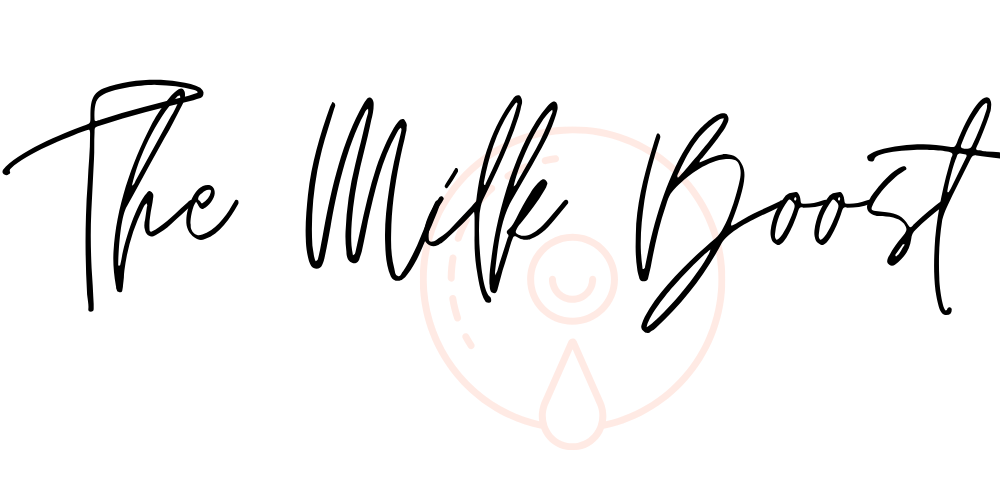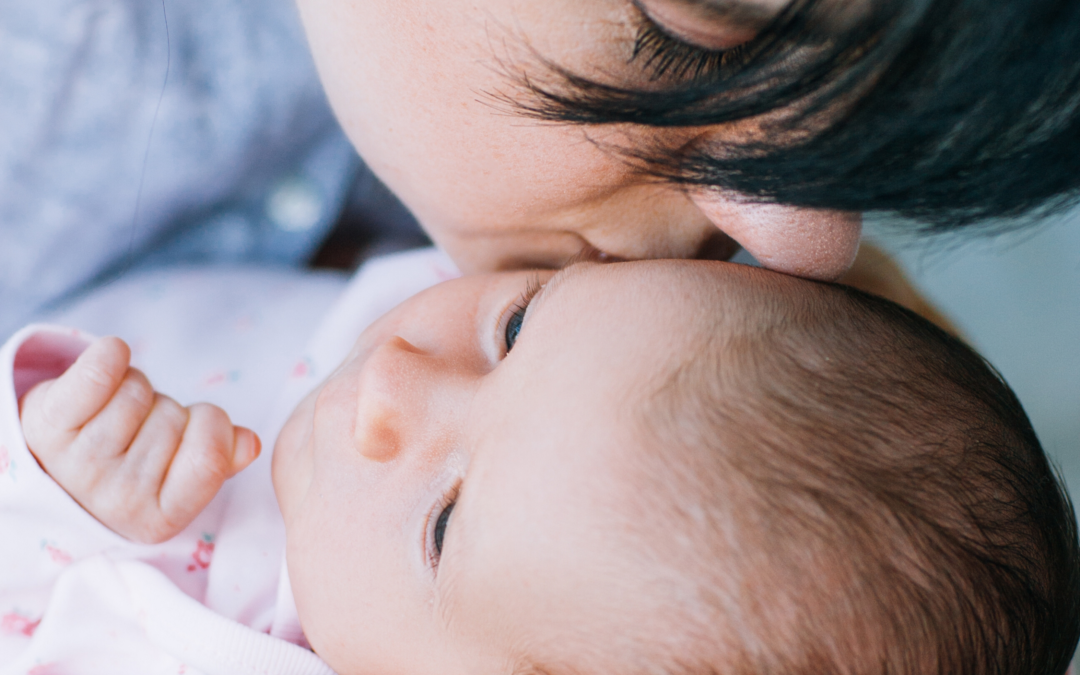This post contains affiliate links to products that we’ve tested, tried and used.
The breastfeeding basics for first-time moms that will save newmommies stress, frustration and low milk supply. This post is written by Andrea Tran, an RN, BSN, MA and IBCLC. She has been working with breasetfeeding mamas for over 25 years, and has some very valuable expertise to share with The Milk Boost community.
Written by Andrea Tran RN, BSN, MA, IBCLC
Breastfeeding is the natural way to feed your baby. That does not mean it will come naturally. For first time moms, this will be new territory. Add in the fact that every baby and mom is unique, and it is easy to understand why it can be an overwhelming and confusing time.
As a new breastfeeding mom, you will have lots of questions. There is a lot to learn. It is always a good idea to start with the basics. These breastfeeding basics for first-time moms will help get you off to a good start.
Do Skin to Skin Right Away
Skin to skin has an amazing effect on both babies and moms. It has an abundance of research demonstrating its benefits (Source).
- Encourages early breastfeeding.
- Increases the likelihood that a baby will exclusively breastfeed.
- Helps babies stabilize their temperature
- Helps babies stabilize their blood sugar
When doing skin to skin, your baby should be laid against you. Her shoulders, chest, and tummy should be facing you. Her head should be turned to one side, and you should be able to see her face.
If you are unable to have skin to skin time when your baby is first born, do it as soon as you can.
Don’t limit skin-to-skin to the period right after birth. Do it as much as you can in those first few days.
Breastfeed As Soon As Your Baby Wants To
Don’t expect your baby will want to latch as soon as he is born. However, most babies will be ready to breastfeed after they have had some time to take in their new surroundings.
Your baby will let you know that he is ready for that first breastfeeding session. Just watch for his feeding cues.
Learn Your Baby’s Feeding Cues
- Smacking lips
- Sticking out tongue
- Opening and closing mouth
- Rooting: turning her head toward you and opening her mouth.
Breastfeeding Positions
Most mamas are in bed the first time their baby wants to breastfeed. Make sure that you get comfortable. Use pillows to support your baby and your arms.
There are four common positions to nurse in. In all the positions, your baby should be turned in toward your body. You want him to be able to latch without having to turn his head to the side.
Cradle Hold
This is probably the most familiar position. It is not necessarily the best one to start with, though. I like to say it’s an “advanced” position. It will feel more comfortable when you and your baby have a bit more breastfeeding experience.
In the cradle hold position, you will hold your baby in the crook of your arm. You offer the breast that is on the same side as the arm you use to hold your baby. Use your opposite hand to hold your breast.
Cross Cradle Hold
This is a position that gives you a lot of control. You hold your baby with the arm that is opposite of the breast you offer. Hold your breast with the same hand as the breast you are feeding from.
Football Hold
This is another position that gives you good control. Your baby is tucked against the side of your body. You will use the same breast as arm that is holding the baby. Your opposite hand will hold your breast. The key to football hold is to keep your baby in close to you.
Side-lying Position
This position can be tricky in the early days. Having someone to assist is helpful. Both you and baby are lying on your sides, facing each other. Baby latches to the breast that is closest to the bed.
Tips for a Good Latch
- Support your baby’s neck and shoulders with your hand
- Keep your hand off the back of your baby’s head.
- Position baby, so her nose is across from your nipple.
- Touch her upper lip with your nipple and let it rest there.
- Don’t move your nipple back and forth.
- When your baby opens wide, then pull her into your breast quickly and closely.
- Her chin should be pressed into your breast
- Her nose should be barely touching your breast or not touching it at all.
How Often Your Baby Should Feed
You should feed your baby whenever you see him making those feeding cues.
The frequency a baby eats in the first week varies tremendously. In the first 24 hours, a baby may not eat at all or may eat ten times. Both can be normal.
By the second 24 hours, a newborn should be eating at least eight times.
The second night the majority of babies will cluster feed and may nurse continuously for hours. We call this second-night syndrome. It is normal healthy behavior. Get a good nap in during the day so you will be rested and ready.
Frequent feeding is beneficial.
- The more frequently your baby eats then, the sooner your milk will come in.
- Babies lose less weight
- There are fewer problems with jaundice
After your milk comes in and for the first couple of months, your baby needs to eat at least eight times every 24 hours. This may be every three hours, or it could be every one to four hours. If a baby eats less than eight times, he may not gain enough weight.
The frequency of feedings is counted from the beginning of a feeding to the beginning of the next feeding.
Feeding more than eight times is common. Some babies will eat as often as every two hours.
If, most of the time, your baby is eating more often than every two hours, you should meet with a lactation consultant. She can help to make sure your baby is feeding effectively, and your milk supply is good.
How Long Should a Breastfeeding Session Last
This is honestly one of the hardest questions to answer. There is a lot of variation.
Feedings should last as long as it takes for your baby to get the amount of milk she needs to grow at an average rate. I know that is vague. But every baby is different.
In general, most feedings should last at least from 10-40 minutes.
If most feedings are lasting longer than one hour, you probably should have a lactation consult. The most common reason feedings last longer than an hour is that the baby is not feeding effectively. A lactation consultant can help you figure out why that is happening.
Signs that a Baby is Feeding Effectively
- You hear or see your baby swallow every 1-2 sucks
- Your breast softens with the feeding
- You see milk when your baby comes off the breast
- Your baby is satisfied for a couple of hours after meals
- Cluster feeding is common in the early months. This is when a baby eats very frequently for a period of time. It often happens in the late afternoon or early evening.
Signs That Your Baby Is Getting Enough to Eat
- Every 24 hours, your baby is having at least six wet diapers AND at least four dirty diapers.
- Dirty diapers should be of a moderate amount.
- Your baby is gaining an average of one ounce a day after your milk comes in.
- Weight trumps everything else. If a baby is gaining enough weight, they are getting enough to eat.
Diapers – Everything You Need to Know About a Breastfed Baby’s Poop
A baby’s first bowel movements are called meconium. This is what is in their bowels at birth. It is very dark green and very sticky.
As they pass the meconium, the stools change to a greenish-brown or greenish-yellow color. These are called “transition stools.”
Within 24-48 hours after your milk comes in, the stools will change to” breastmilk stools.” These will be yellow, very loose, and may look there are seeds in them.
Lots of poop is a reassuring sign that your baby is getting a lot to eat from breastfeeding.
Weight
- A newborn will initially lose weight.
- Up to 10% of weight loss is within normal limits.
- After your milk comes in, baby should start gaining weight.
- Your baby should be back to birth weight by two weeks of age.
- Average weight gain in the first three months is 5-7 ounces per week.
When Does the Milk “Come In”?
A mom’s milk “comes in” within 48 – 72 hours after birth. I actually don’t like that phrase because it is a process as opposed to an event.
How Will I Know My Milk Is Coming In?
Your breast will start to feel different. They may feel firmer, tender, warmer. They will get larger.
There should be no doubt that something significant is happening. I tell moms there should be a point where they look in the mirror and say, “Oh my goodness! My breasts have never looked like that before.”
When a mom’s breasts get very large, it is often because of swelling of the breasts. In the beginning, there is more swelling than milk. The swelling is called engorgement and usually goes away within a day or two. As the swelling decreases the milk production dramatically increases.
Common Problems
Sore Nipples
Most moms will complain of some degree of nipple soreness.
“Normal” nipple soreness:
- Starts within the first 24 hours
- It is the worst between two to four days.
- Feels much better by the end of the first week
- Is entirely gone by the end of the second week
- Hurts when the baby first latches on but subsides after 10-20 sucks
- The nipple is round when the baby detaches
- There is no trauma to the nipples or areola (cracks, bleeding, bruises, or blisters).
Call a lactation consultant if there is any trauma or if things are not improving, as described above.
Gel pads can help with nipple discomfort.
Engorgement
Engorged breasts are hard.
There are two types of breast engorgement.
- Engorgement that is caused by swelling of breast tissue
- Engorgement that is caused by lots of milk in the ducts
Using ice packs on your breasts for 20 minutes will help decrease swelling. You can do this every couple of hours.
Feeding or pumping will help relieve engorgement that is from a lot of milk.
It is essential to keep the milk moving when you are engorged.
The first weeks of breastfeeding will be a time of mand and frequent changes. Now that you’ve read this, you should be prepared for the most common questions new nursing moms have. You can look forward to settling into a breastfeeding routine after those first few crazy weeks.

